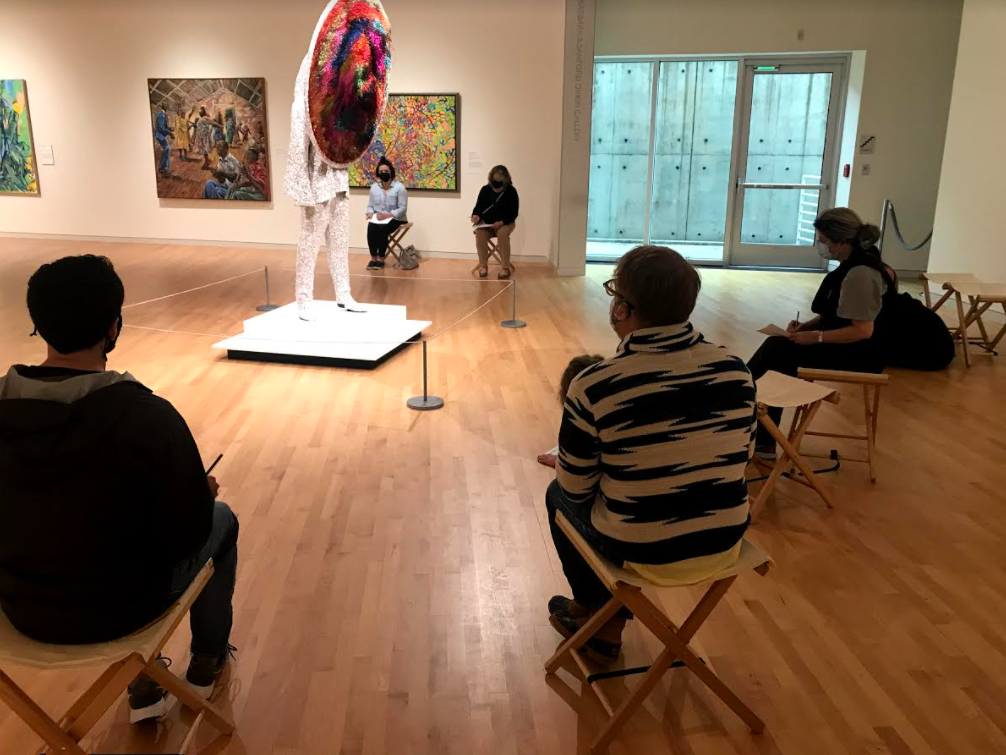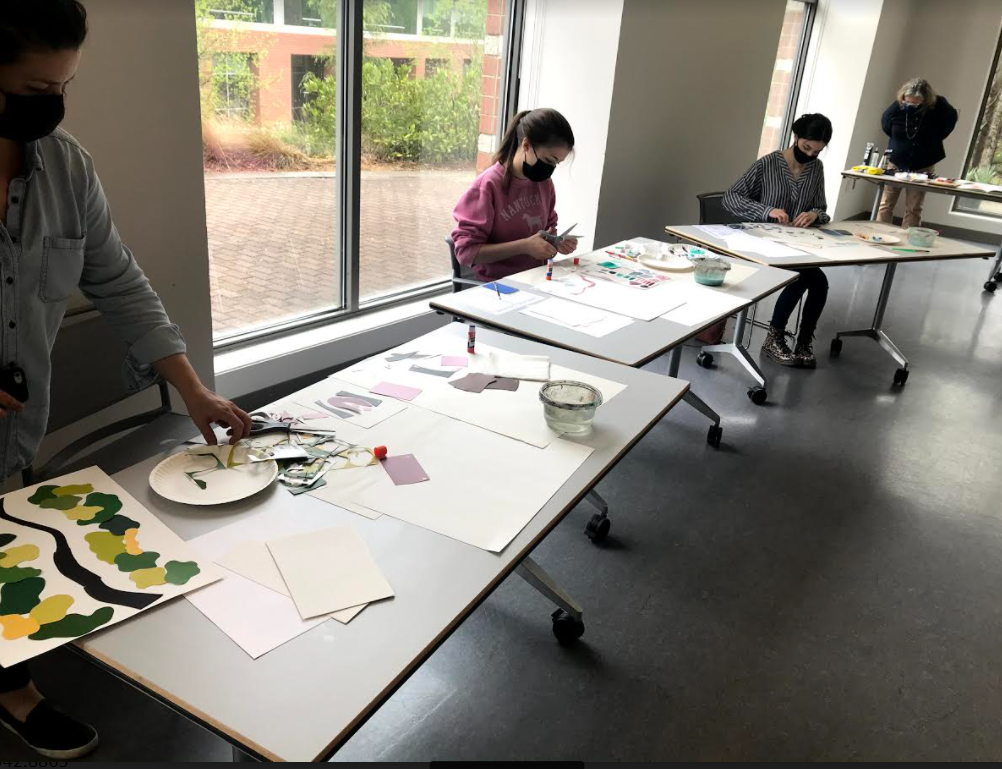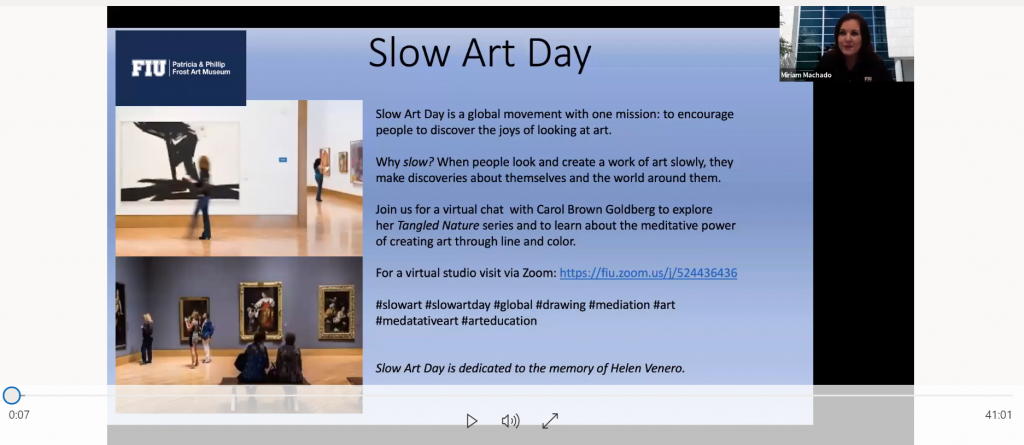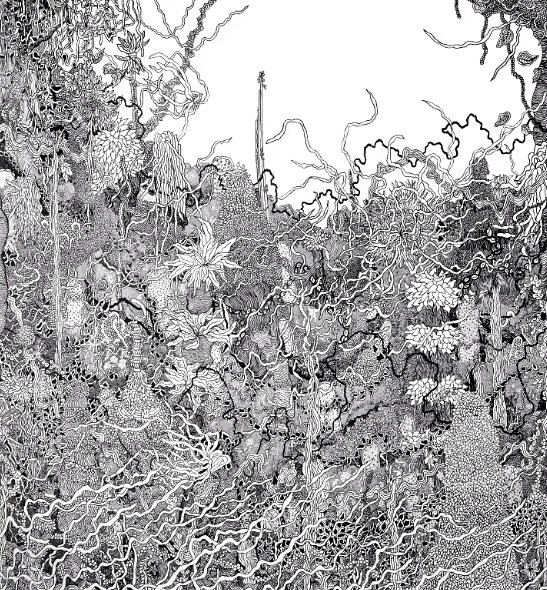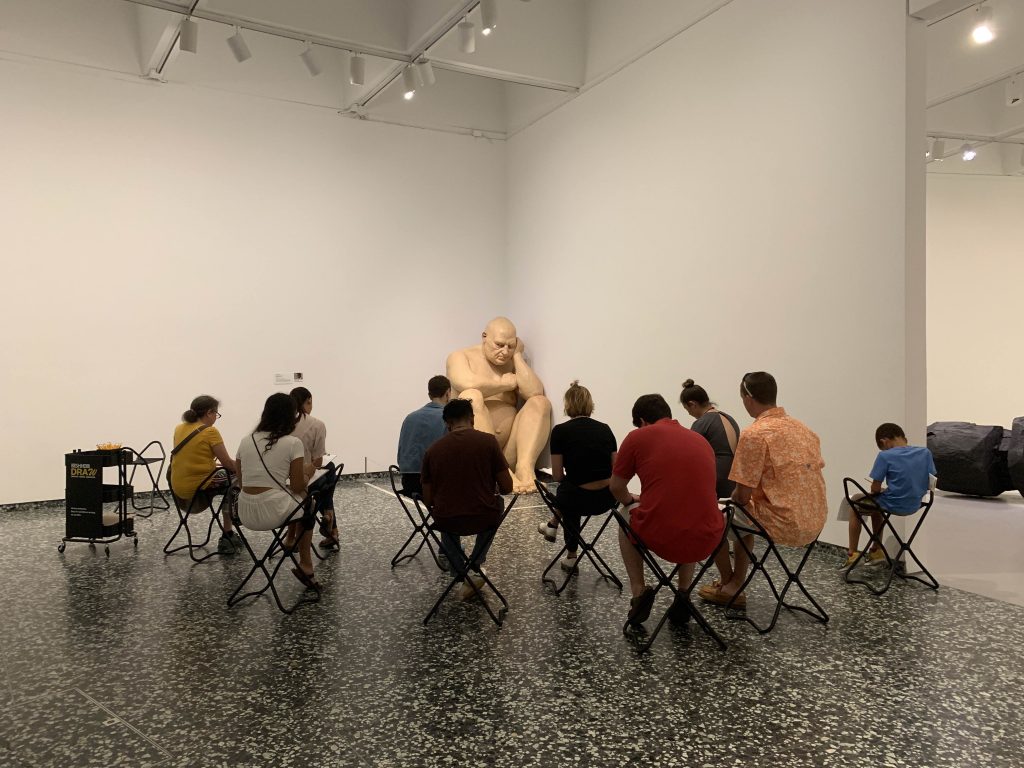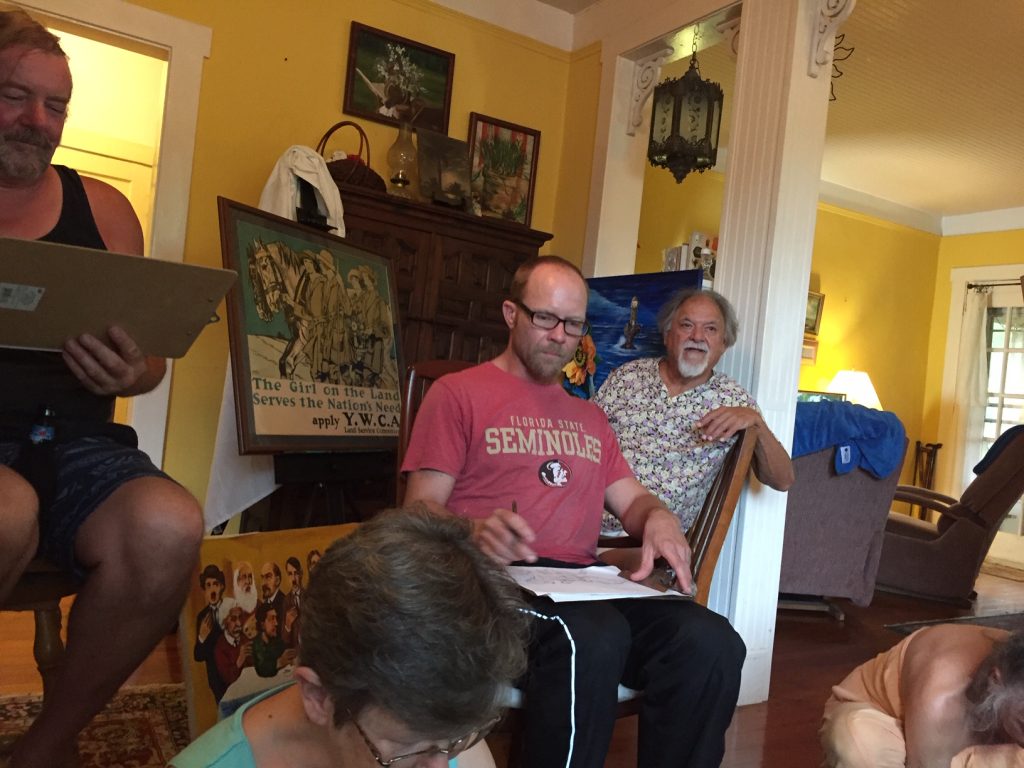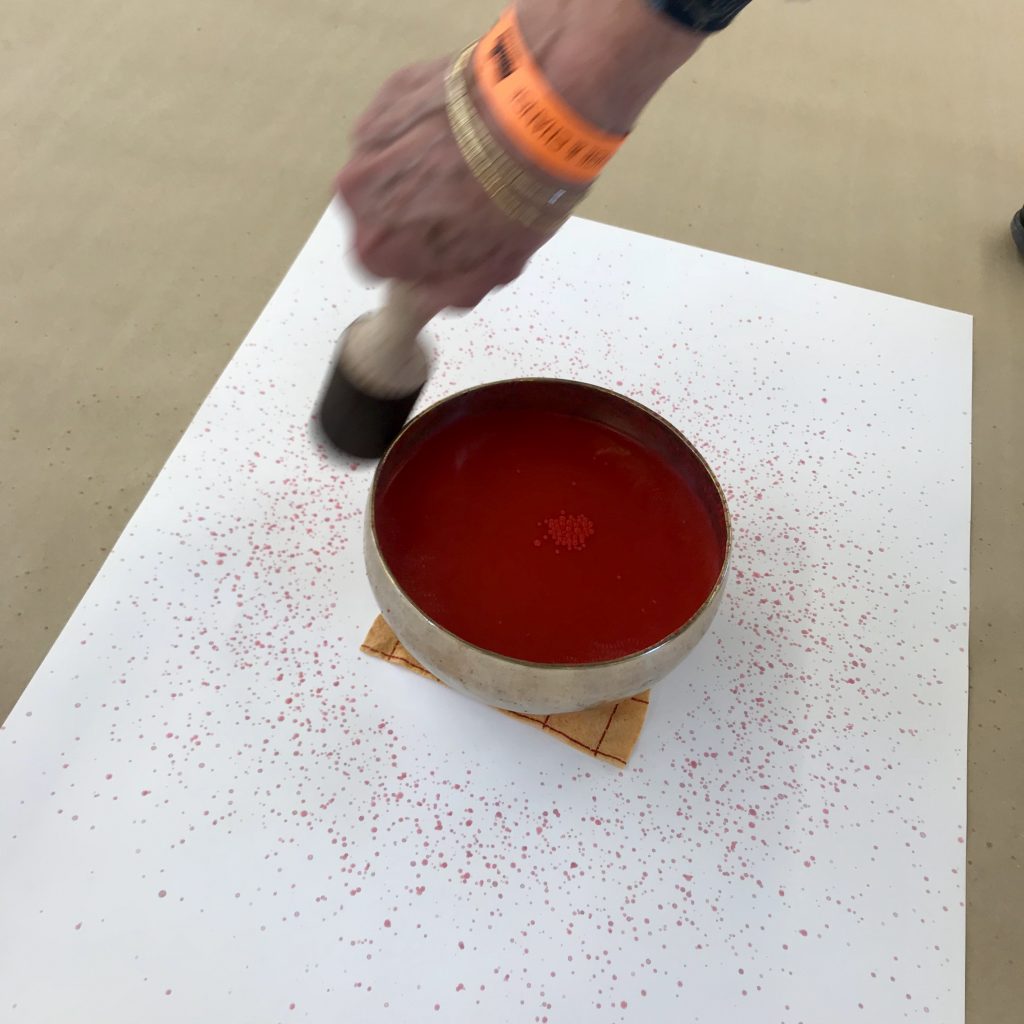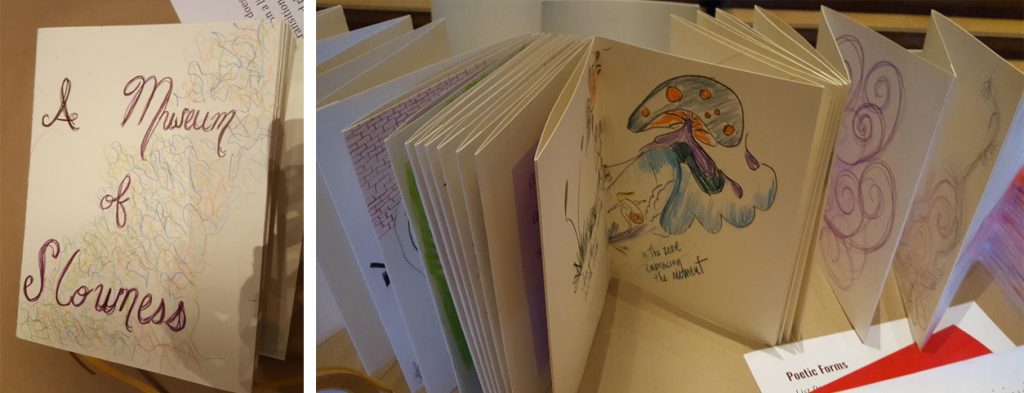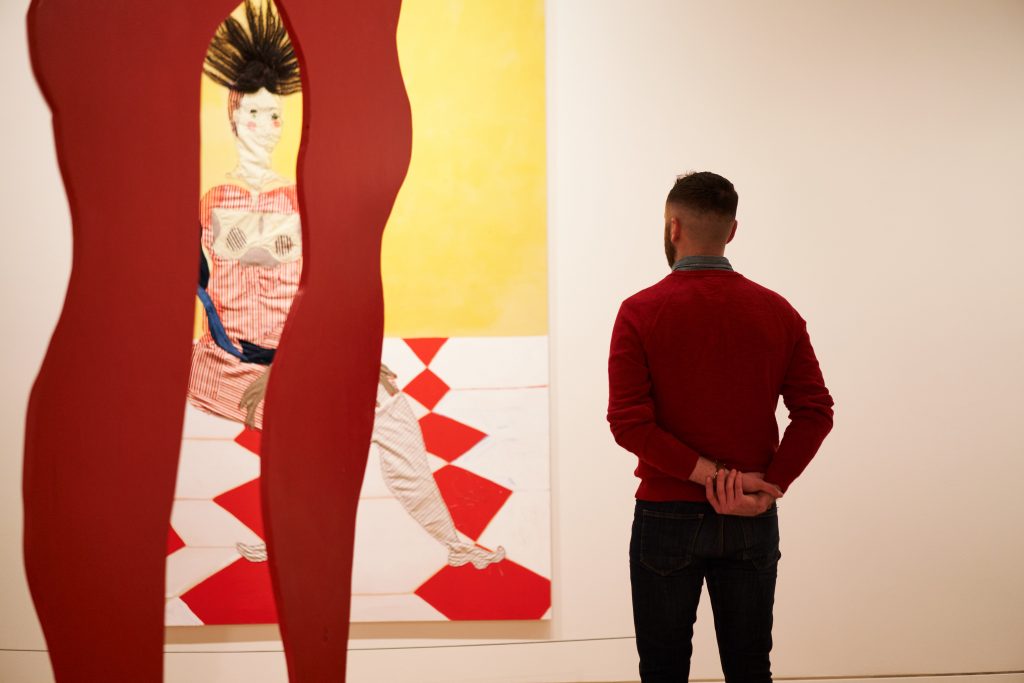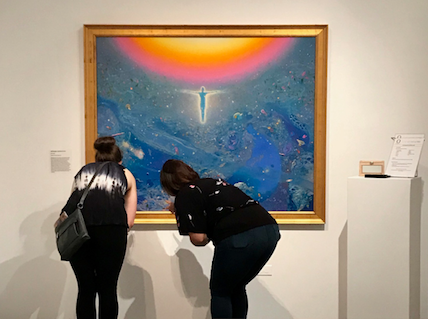For their 7th Slow Art day, the Harn Museum of Art, located on the campus of The University of Florida in Gainsville, featured 5 artworks from their collection, including:
– Dogon Couple, by Kehinde Wiley
– Northeast Gorge at Appledore, by Childe Hassam
– Pli Selon Pli, by Akiyama Yo
– Waiting for the Signal, by Robert Fichter
– Horizontal Mask (korubla), by a Senufo artist
Host Allysa Peyton, Curator and Student Engagement Manager, and a group of University of Florida student ambassadors greeted participants with a flier that spelled out instructions, featured art works, and space to draw or take notes (see below).
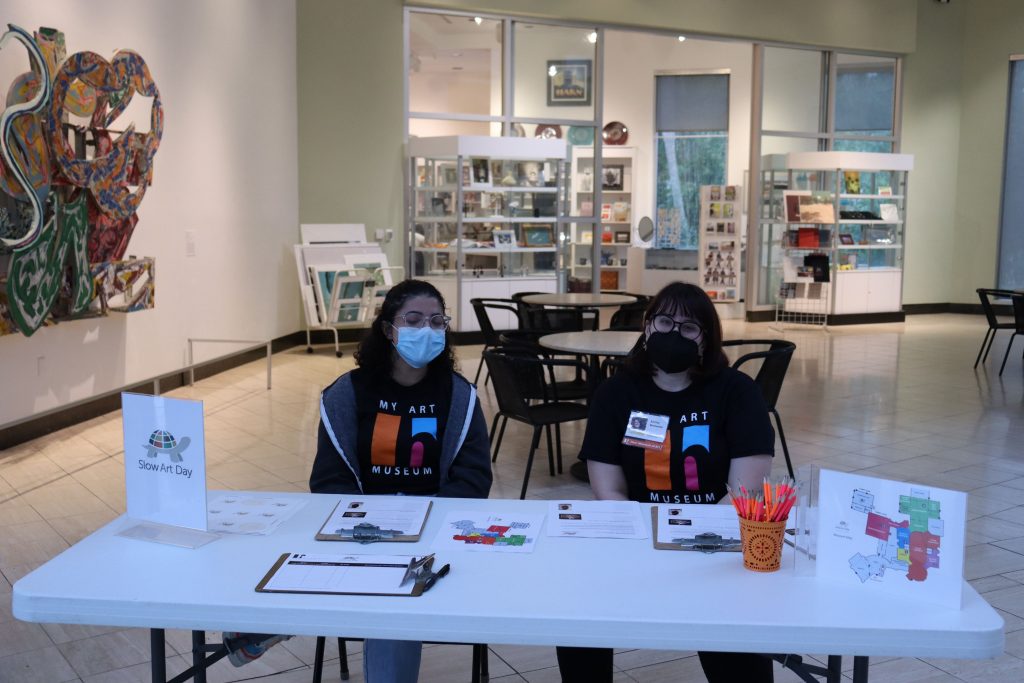
The Harn instructed attendees to spend 10-12 minutes with each of the five featured artworks and encouraged them to not only draw or make notes, but also to reflect on the experience of looking slowly – and how what they see in the art may change over time.
After the slow looking session, everyone then gathered for tea, cookies, and discussion.
Educators and curators in the slow looking movement should take a look at their simple flyer (attached above) and consider copying elements of their approach for future sessions.
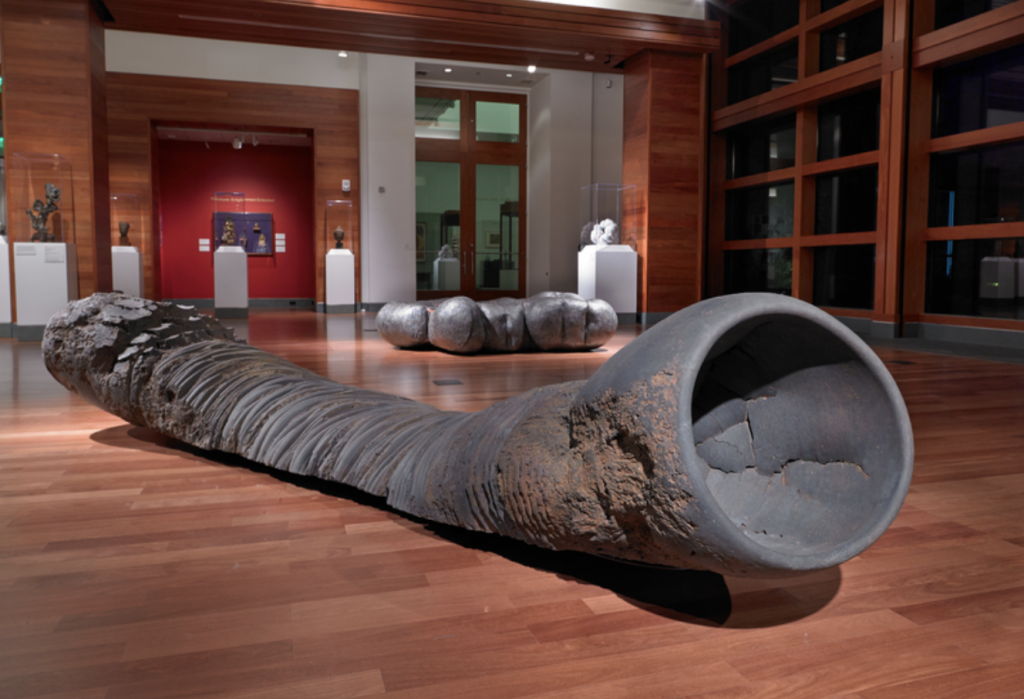
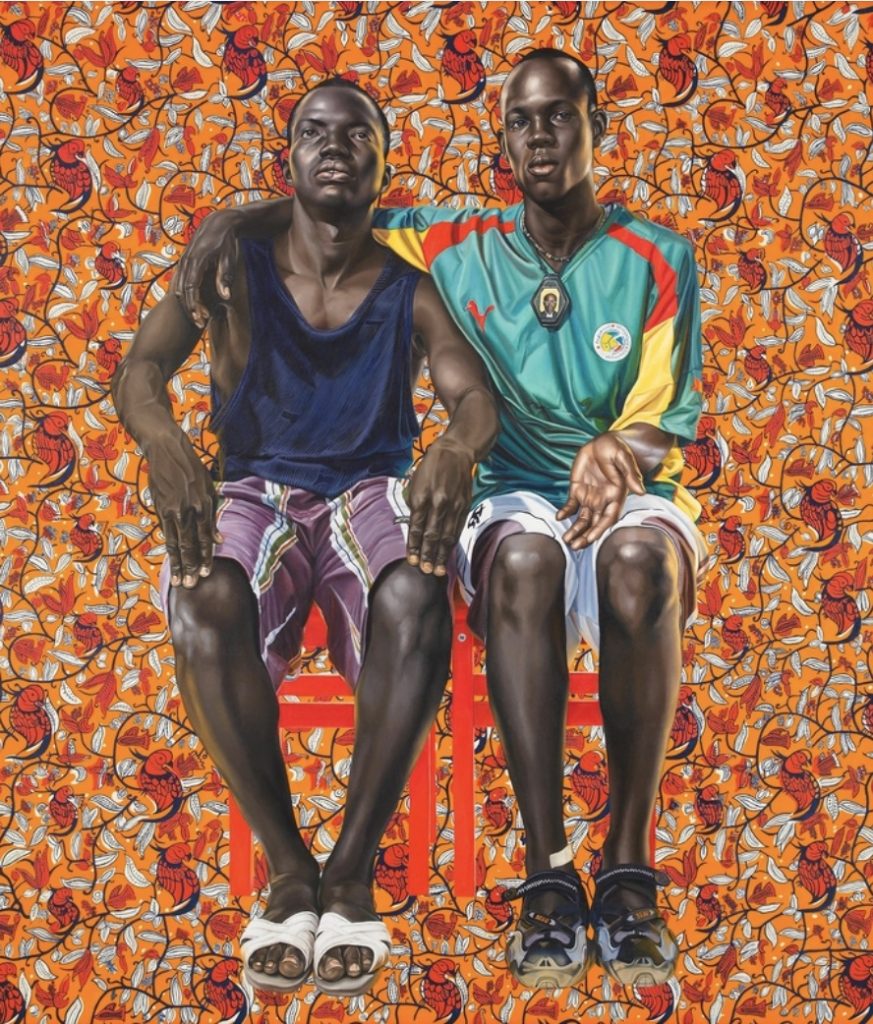
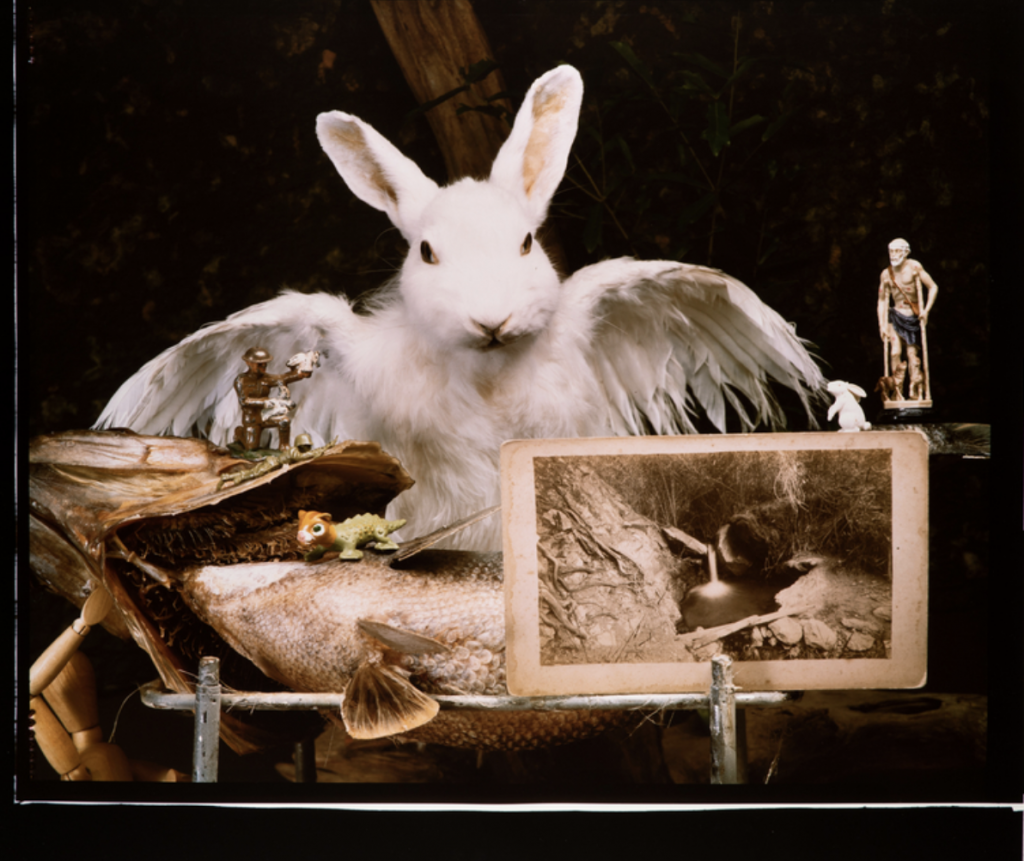
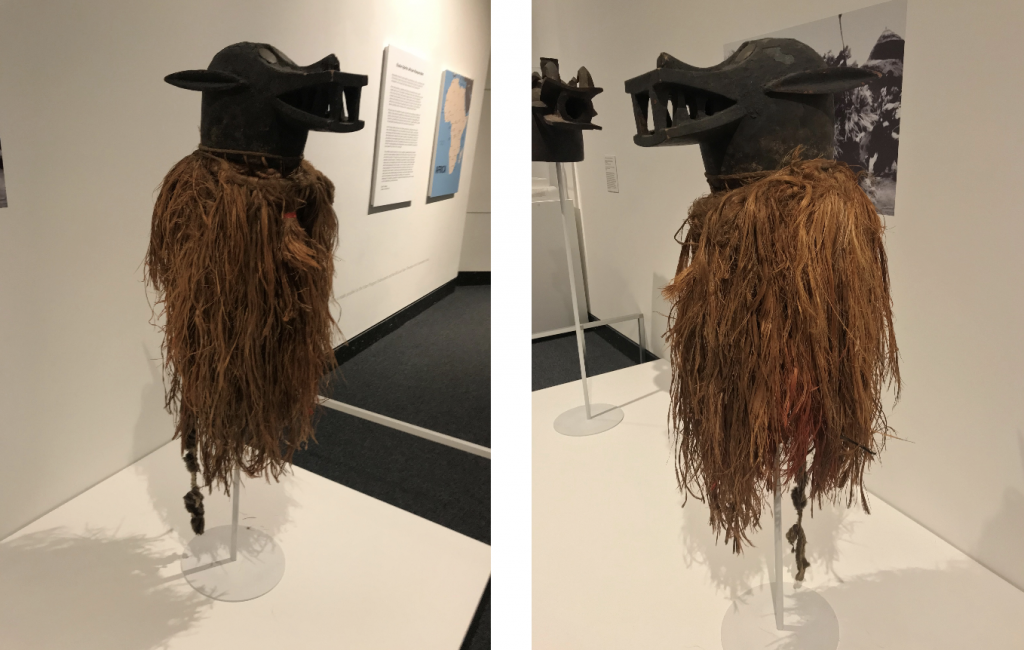
The Harn Museum of Art has also launched a year-round program Art & Mindfulness, which incorporates slow looking and guided meditations in 40-minute workshops.
We at Slow Art Day HQ like the incorporation of drawing and notes – and especially appreciate the cookies and tea (yum, yum) at the end – and we look forward to seeing what they come up with for Slow Art Day 2023.
Best,
– Robin, Ashley, Phyl, Jessica Jane, and Johanna
P.S. The Harn Museum of Art can be found on Twitter, Instagram, YouTube, and Facebook.


